Somalia is a country in East Africa, which as a result of civil wars fell apart and was put back together again. Along with the historical events, the symbolism has also changed.
This is what the modern flag of Somalia looks like:
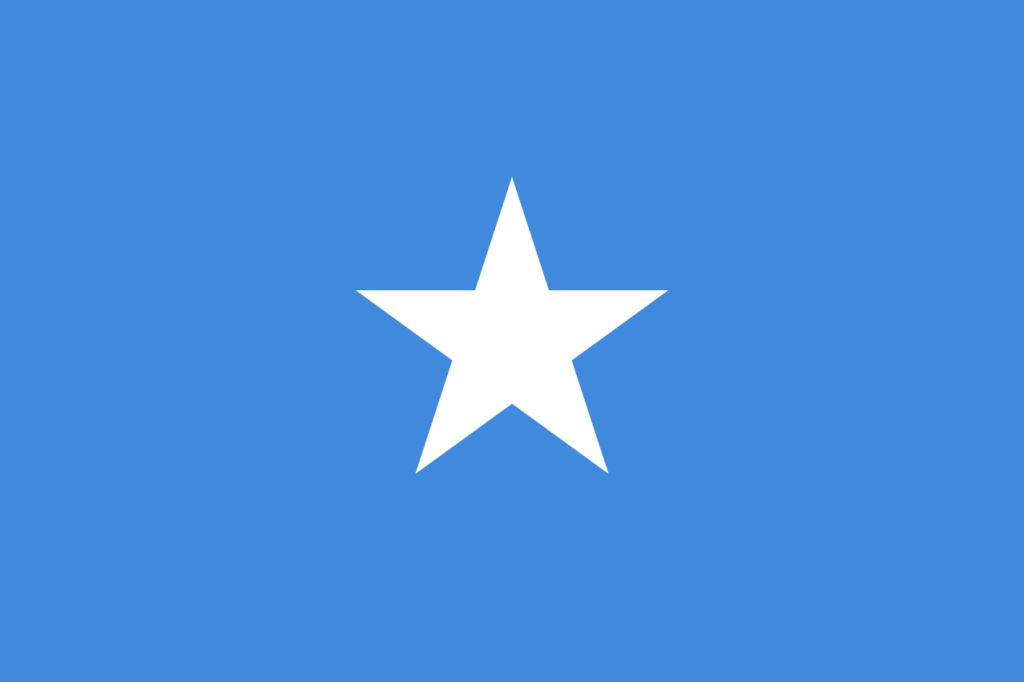
History of the flag
In the XV-XVI centuries the territory of modern Somalia was occupied by the Sultanate of Adal, whose flag was a vertical cloth on which there were three vertical stripes — the central one was red and the outer ones were white. On each of them were three crescents of the same color (white on red, red on white).
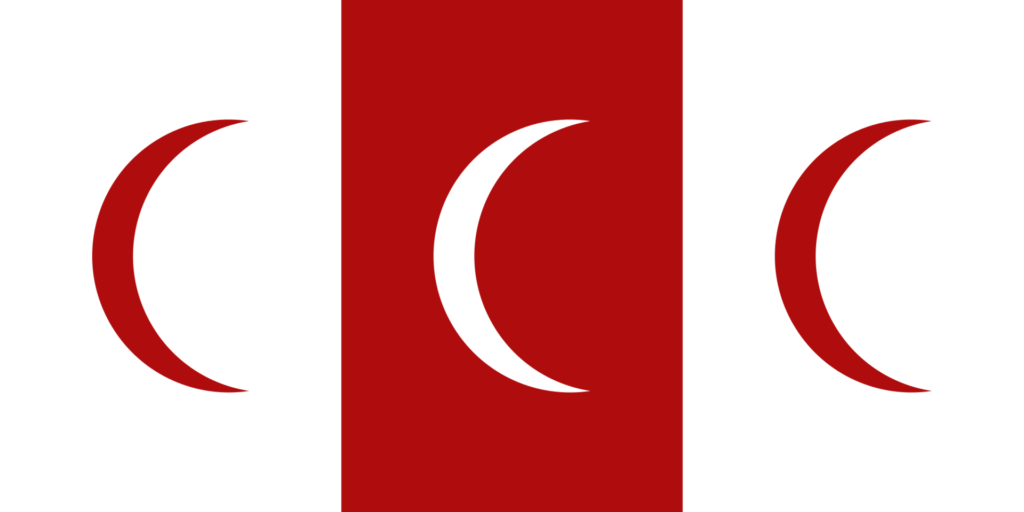
The other part of the state was occupied by the Ajuran Imamate, which existed from the 13th to the 17th century. Its flag had an unusual form — triangular. Its entire area was divided into two triangles — red and yellow, and at the stem there was a white crescent.
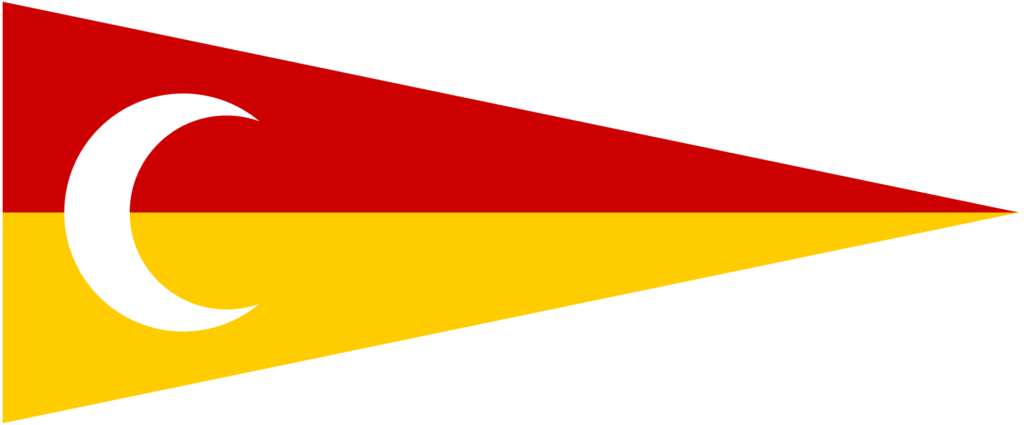
In the 16th century the territory belonged to the Ottoman Empire, so its flag, turned into a red rounded triangle with a yellow crescent, was used as the state flag.
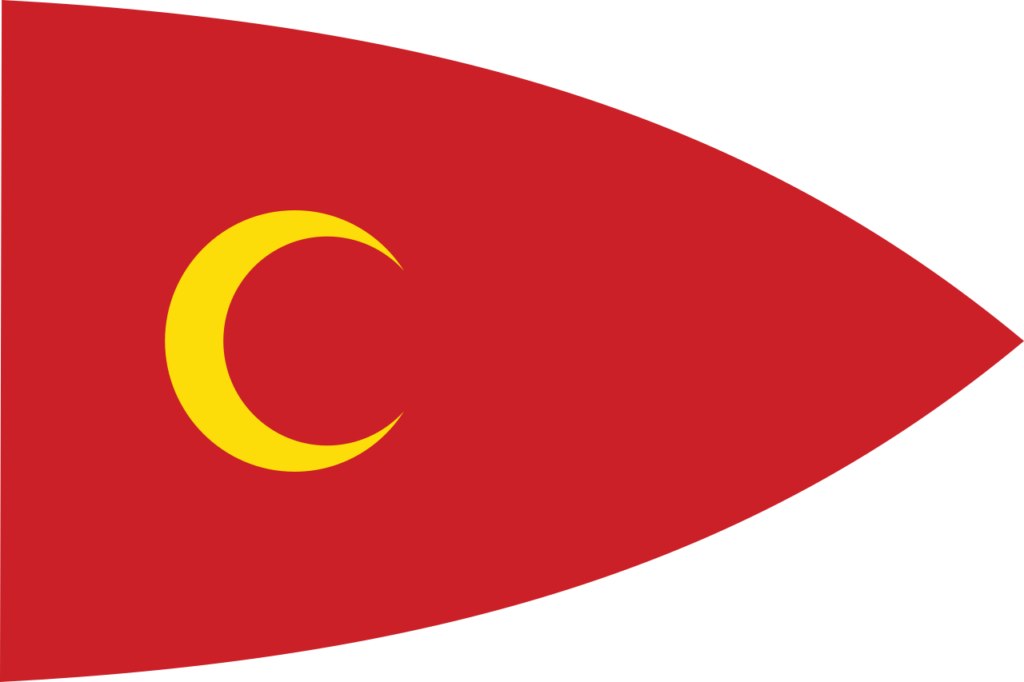
In the 19th century, there was a state of dervishes (monks and ascetics) in the north of the country; its flag was a rectangular green cloth with a red rectangle in the center.

From 1861 to 1946 part of the state belonged to Italy and had the same flag as the metropolis, only with the image of a coat of arms — red with a white cross in a blue frame.

In 1903, the British Somali was formed, which had a blue flag with a Union Jack at the top corner at the staff and an antelope in a white circle at the free right end.

In 1950 its place was taken by the coat of arms of the colony, which was corrected in 1952.

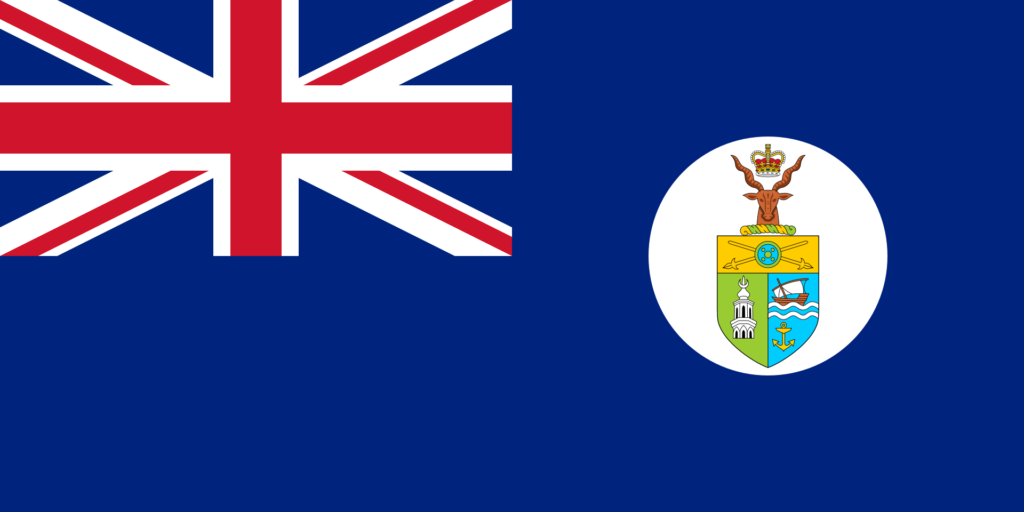
The modern flag was officially adopted in 1960, but Mohamed Awal Liban created it six years before that.
Description
It is a single-color rectangular cloth, in the center of which is a five-pointed star. The aspect ratio of the banner is 2:3.
Flag colors
It has two colors — white and blue.
Meaning of colors and flag symbol
The blue was taken as a sign of gratitude from the flag of the United Nations, which made a great contribution to the liberation of Somalia from Italy. It also symbolizes the peaceful sky.
White in heraldry represents purity.
The star represents freedom, and its five ends represent the five regions of the country.
Other Flags
There are self-proclaimed states on the territory of the Somali Republic that have their own symbols:
- Avdaland — three vertical stripes, the central one — white, wider than the extreme ones — blue. It has a blue outline of a crescent moon and a five-pointed star.

- Azania is a tricolor with white, blue, and red stripes arranged horizontally.

Flag of Azania - Galmudug — blue with a green triangle with a white outline at the stem, on it — a crescent and a white star.
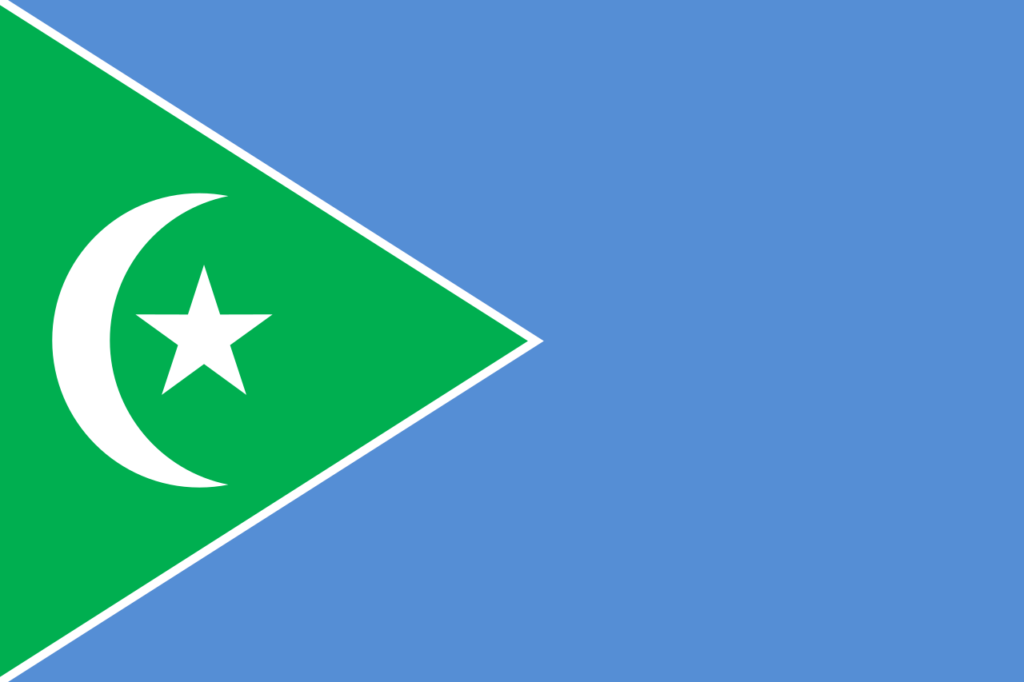
- Jubaland is a tricolor with green, blue, and white horizontal stripes. The center one of the tops of a blue triangle with a white star on it «dissolves» on the left side.
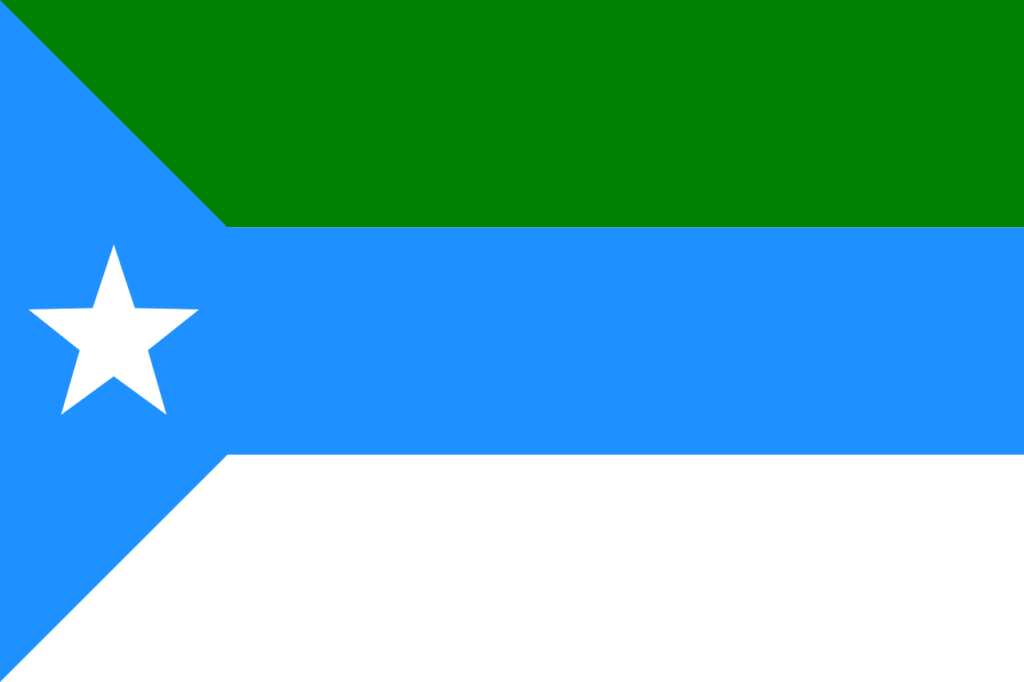
- Northland is identical to the official one.
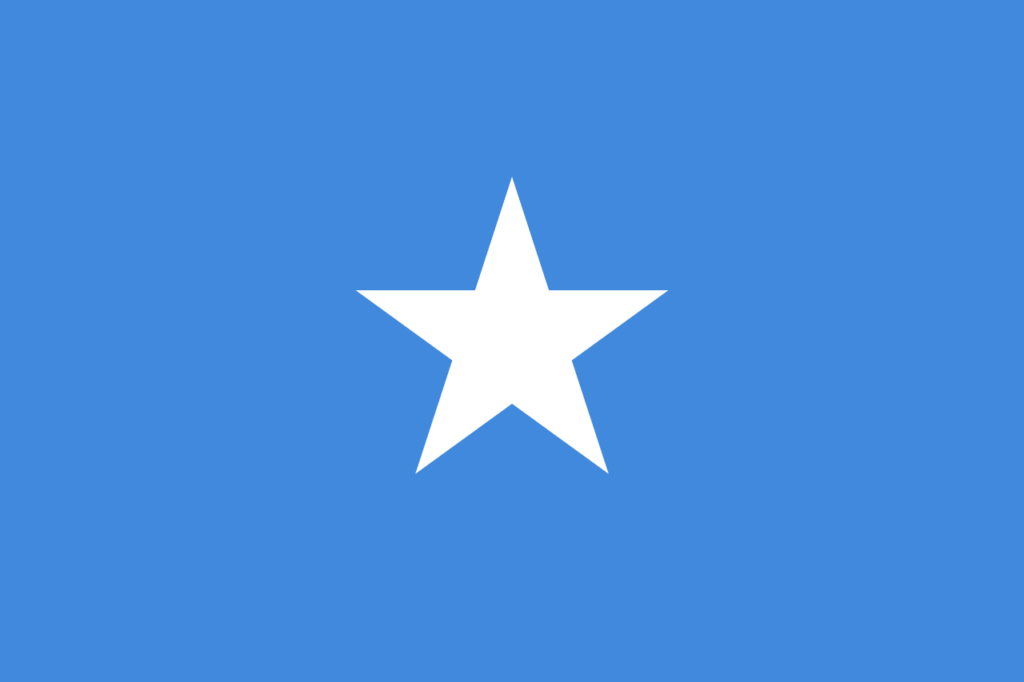
- Maahir is like the state, but with white and black stripes on the bottom.
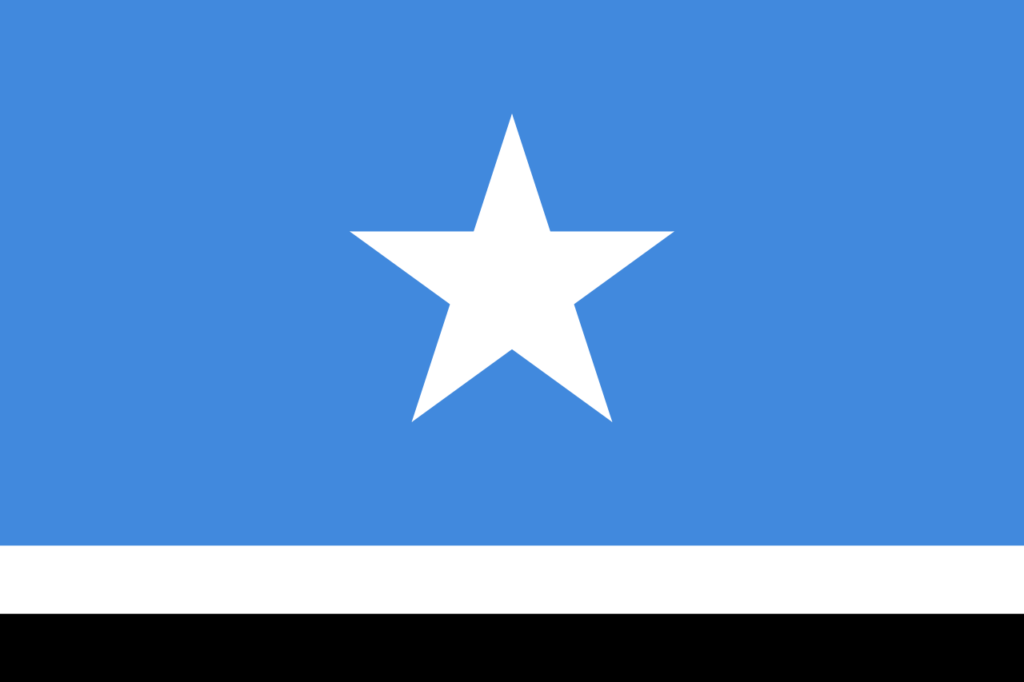
- Puntland is tricolor with blue, white and green horizontal stripes, with a white star on the top.

- Somaliland is a tricolor with green, white and red horizontal stripes, with a white Arabic phrase on the top and a green star on the center.
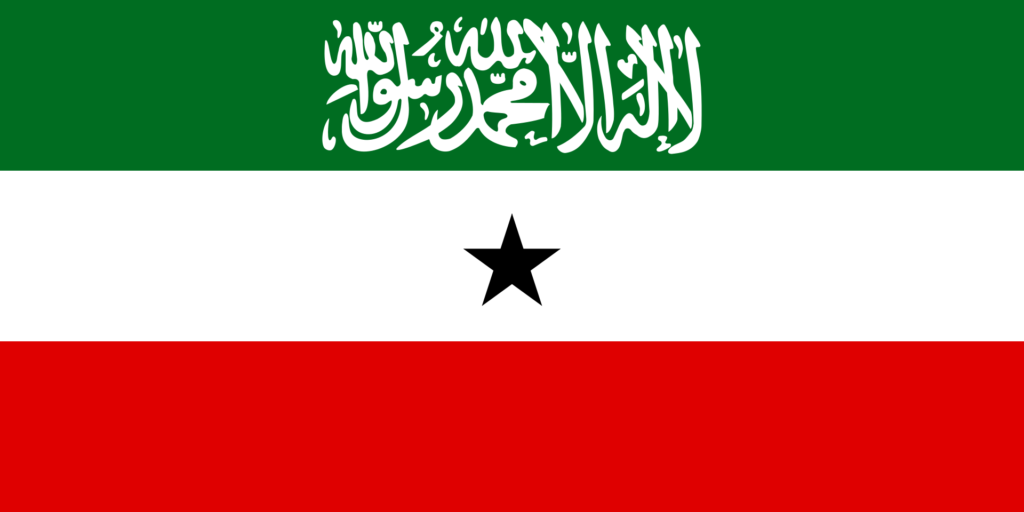
- Southwest Somalia — two triangles, blue at the stem, green at the free edge, separated by a red stripe. The left triangle has a white star, the right triangle has six white stars arranged in a circle.
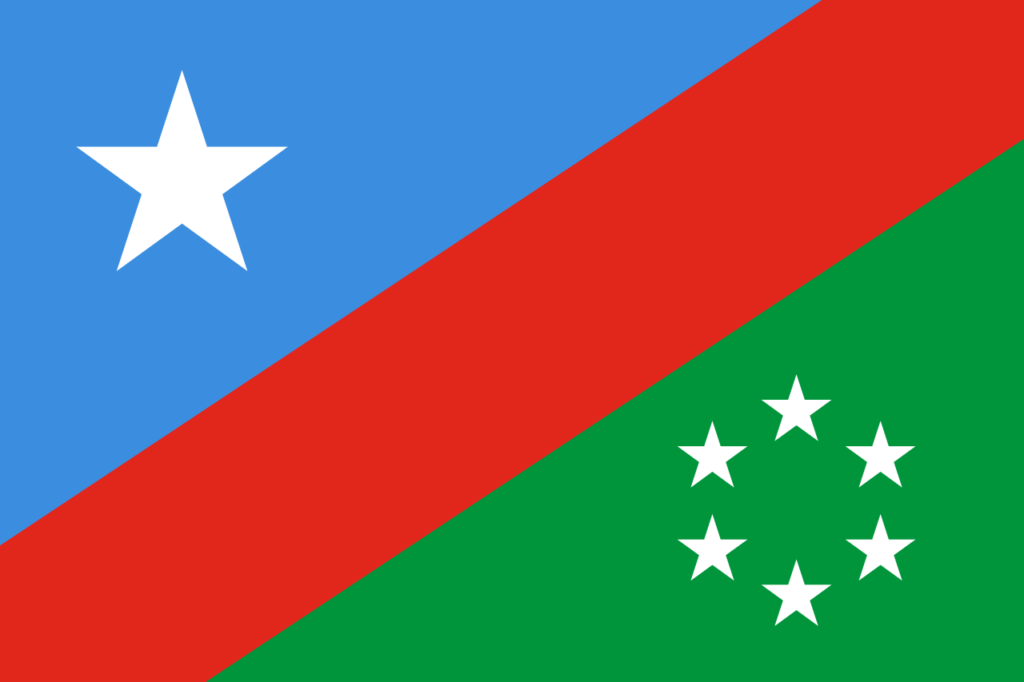
The Republic is proud of its history and its flag, which appeared with the finalization of independence.
General information about Somalia
| Official language | Somali and Arabic |
| Capital | Mogadishu |
| Territory | 637,657 km² |
| Population | 12,316,895 people |
| Currency | Somali shilling |
| Phone Code | +252 |










Как Данила Рыбаков, хочу отметить, что флаг Сомали имеет огромное символическое значение для нации. Его светло-голубой цвет олицетворяет мир и небосвод, а белая звезда, находящаяся в центре, символизирует единство пяти регионов, населенных сомалийцами. Этот флаг не только отражает идентичность страны, но и вдохновляет на стремление к миру среди многонационального общества. Важно помнить о значении символов, которые представляют целую культуру и историю.
Согласна с вами, Данила! Символы действительно имеют мощное значение. В моем городе мы недавно обсуждали значение нашего флага, и это помогло многим лучше понять нашу культуру. Такие разговоры укрепляют общение и взаимопонимание между людьми!
Как Артём, хочу сказать, что флаг Сомали очень символичен. Он состоит из простого, но глубокого небесно-голубого цвета с белой пятиконечной звездой, который олицетворяет мир, надежду и единство. Звезда символизирует пять территорий, где проживают сомалийцы. Это яркий пример того, как флаг может нести в себе историю страны и aspirations её народа. Важно помнить о значении таких символов и их роли в объединении нации.
Светлана:
Флаг Сомали, с его ярким небесно-голубым фоном и белой пятилучевой звездой, символизирует единство и мир. Этот дизайн не только отражает природу страны, но и её стремление к стабильности и гармонии. Интересно, что говорят о значении звезды и как она вдохновляет сомалийцев на построение лучшего будущего. Надеюсь, что это символ вдохновит не только самих сомалийцев, но и весь мир на поддержание мира и согласия.
Как мужчина с интересом к мировой культуре, хотел бы отметить, что флаг Сомали, с его яркими оттенками синего и белой звездой в центре, символизирует мир, единство и надеждность. Он отражает богатую историю страны и стремление к стабильности. Трепетное уважение к национальным символам помогает сохранить идентичность нации. Надеюсь, что сомалийский народ продолжит двигаться к лучшему будущему, несмотря на все трудности.
Как мужчина, я полностью согласен. Помню, когда изучал культуры для поездки, именно уважение к символам помогло лучше понять страну. Флаг — это отражение души народа. Важно ценить историю, чтобы строить светлое будущее вместе.
I remember visiting a cultural festival where the flag of Somalia was proudly displayed. It was so vibrant! The blue really stood out, symbolizing peace and unity. Learning about its meaning made me appreciate the rich history and values behind it. It was a beautiful experience!
I absolutely love the Flag of Somalia! It’s such a beautiful shade of blue. I remember visiting a cultural festival and seeing it proudly displayed everywhere. It made me feel connected to the rich history and vibrant culture. Can’t wait to learn more about it!
Patricia here! I get that vibe—once at a world fest, I saw the Somali flag too. That blue really sticks with you. Felt like a bridge to a whole culture I’d barely known. It’s cool how colors can tell stories, right? Keep diving in; it’s worth it!
Hey Christopher! Totally get that vibe—the blue really pops and has that calming, deep-sea feel. At a similar event, I saw how flags spark connections and stories, making history come alive. It’s amazing how colors carry so much meaning beyond just looking cool!
I remember visiting a Somali festival where the vibrant blue flag was everywhere. It felt so unifying to see everyone come together, celebrating their culture and traditions. The sense of community was amazing, and the food was delicious! It was a beautiful day full of smiles and connection.
When I visited Somalia, I was fascinated by the flag’s colors and meaning. The blue represents the sky and the ocean, while the white star symbolizes unity. I remember taking a photo with the flag waving in the background—it felt like a powerful reminder of the country’s resilience.
As a traveler, spotting the Somali flag fluttering always reminded me of the warm hospitality I experienced there. One time, a local invited me to share a meal under the sun—such a genuine moment connected to that beautiful blue and white flag! Love its simplicity and meaning.